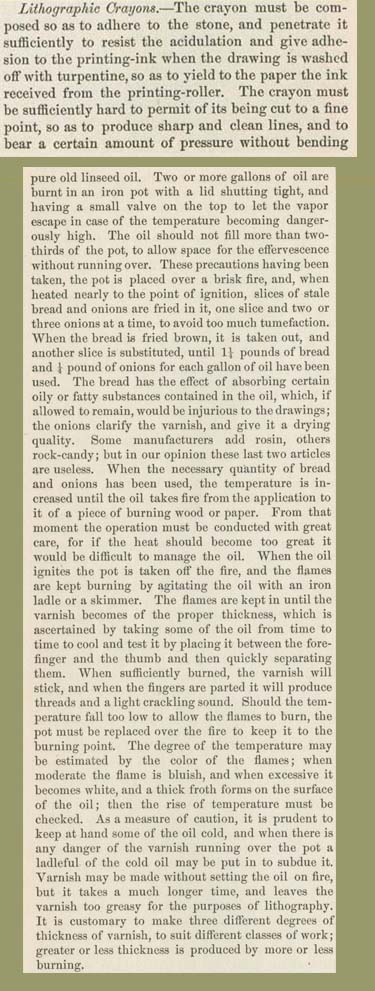
Excerpts from Peter S. Duval, “Lithography” in J. Luther Ringwalt, American Encyclopaedia of Printing (Philadelphia: Menamin & Ringwalt, 1871). s.
Up until the later 19th century, lithographers generally made their own crayons and printing ink (usually lampblack added to varnish) for the drawing and inking of designs on the stone. As evident from these two recipes, written over forty years apart, the basic components and preparation remained about the same. Bread still found its way into the dangerous process of making the varnish from linseed oil heated to ignition, as did onions despite the earlier dismissal in the Franklin Journal of its benefits. The addition of salt of nitre to the crayon mixture of wax, soap, suet, and lampblack aided in the creation of different, harder types of crayons used after the 1820s for finer lines.